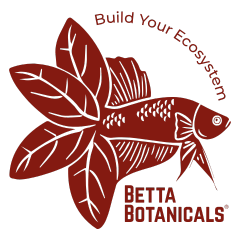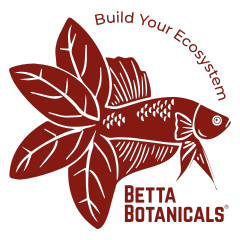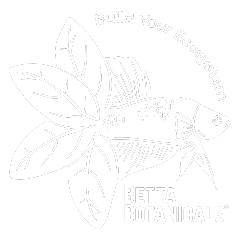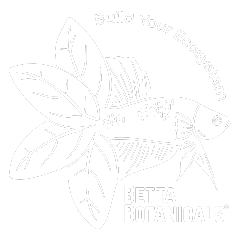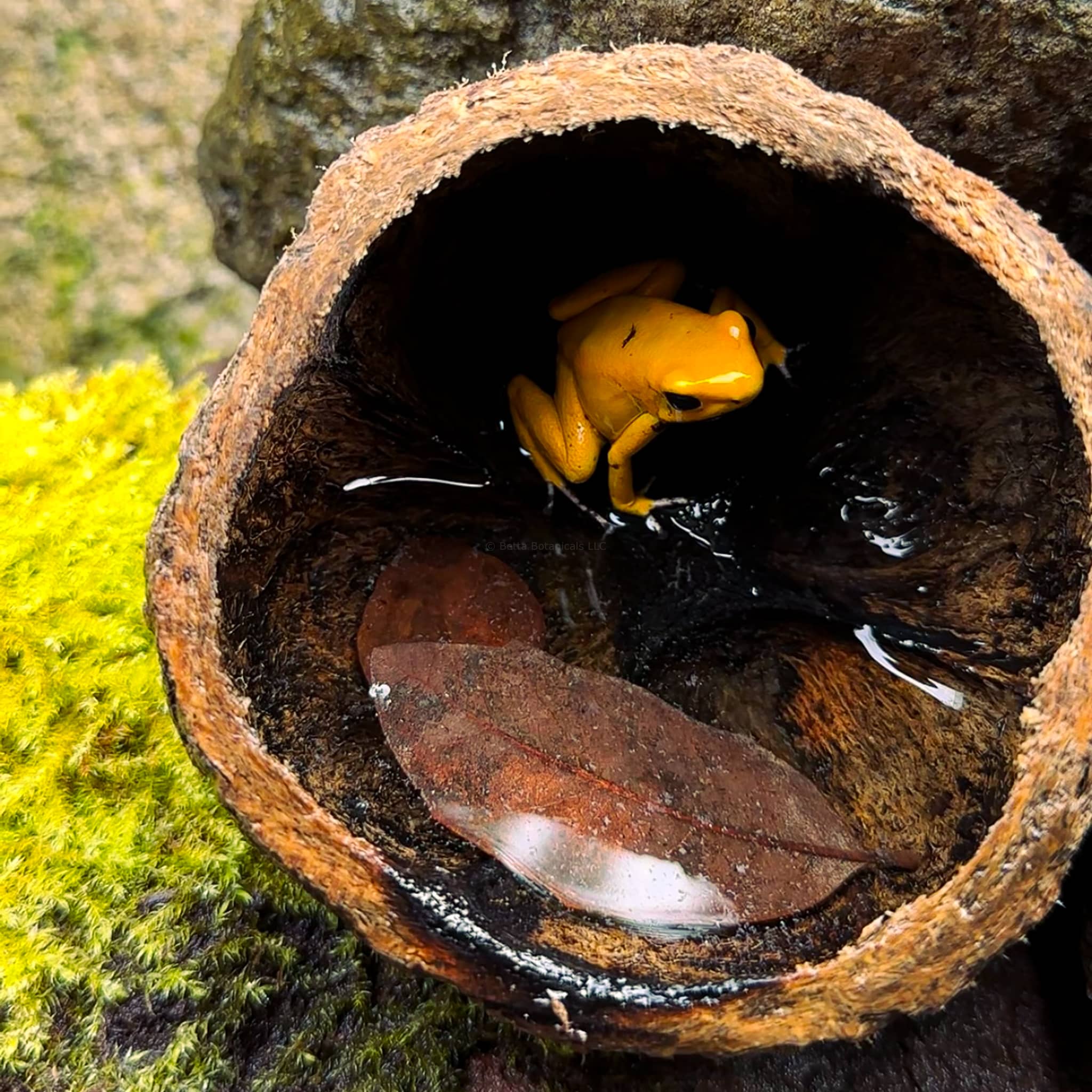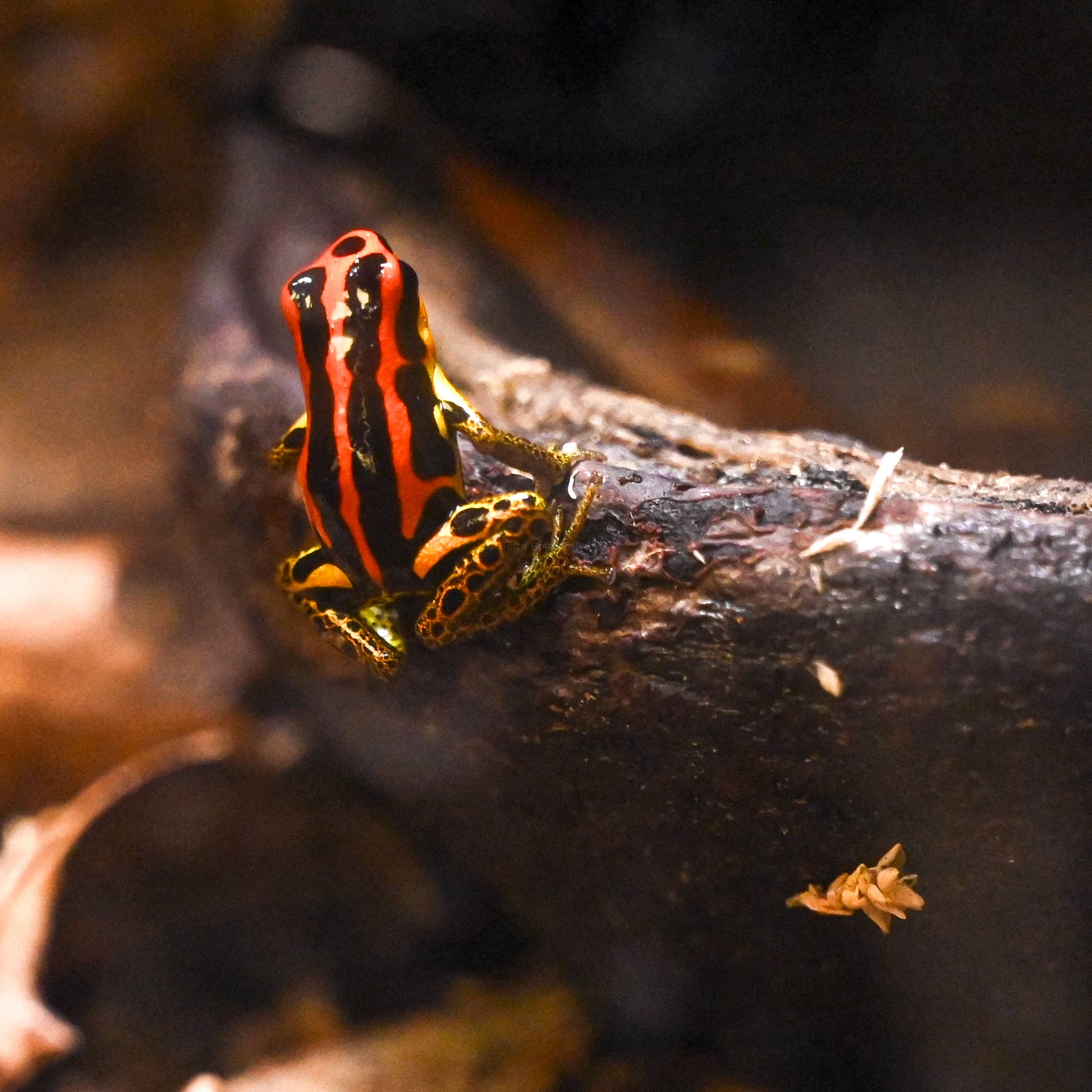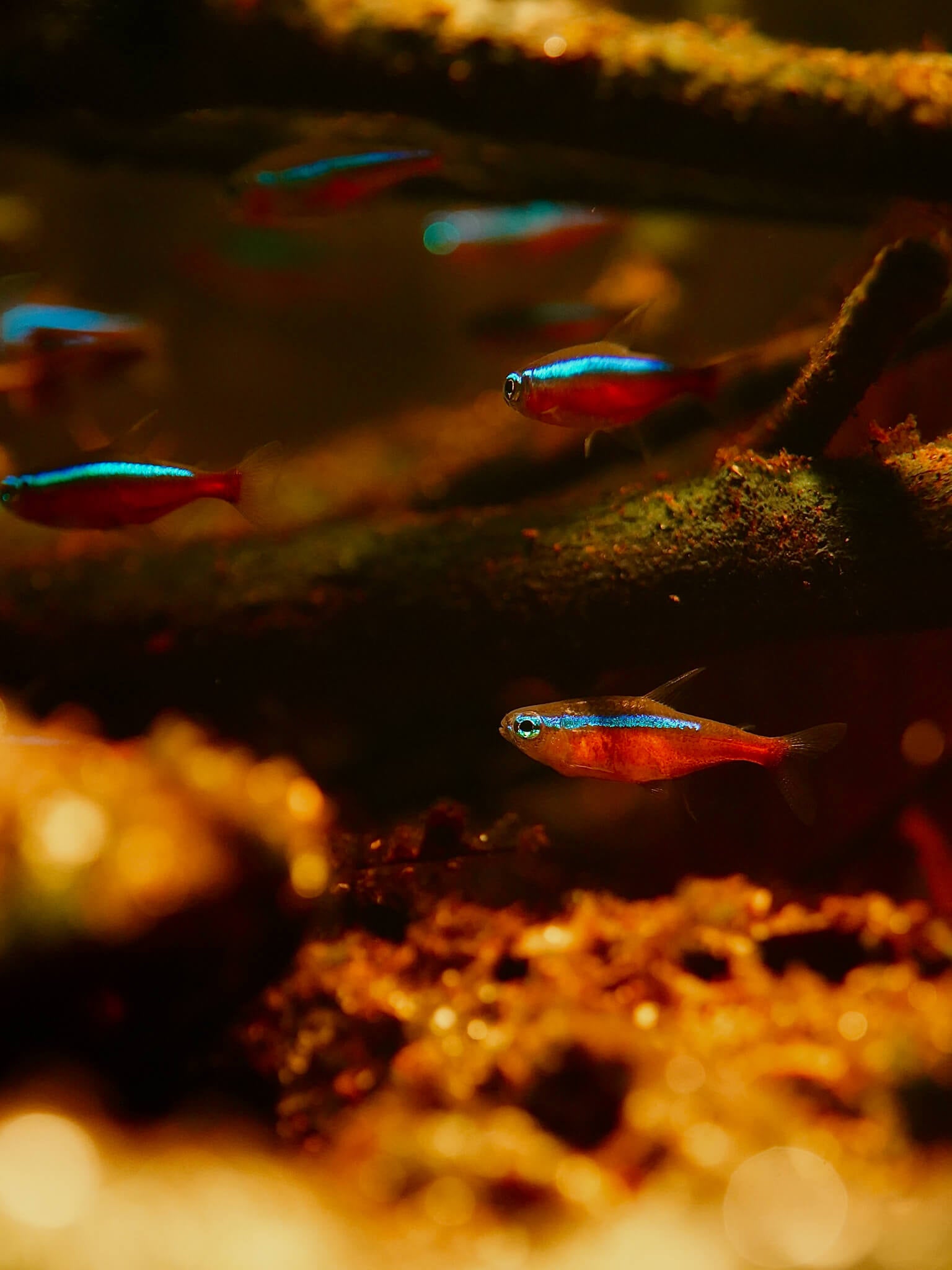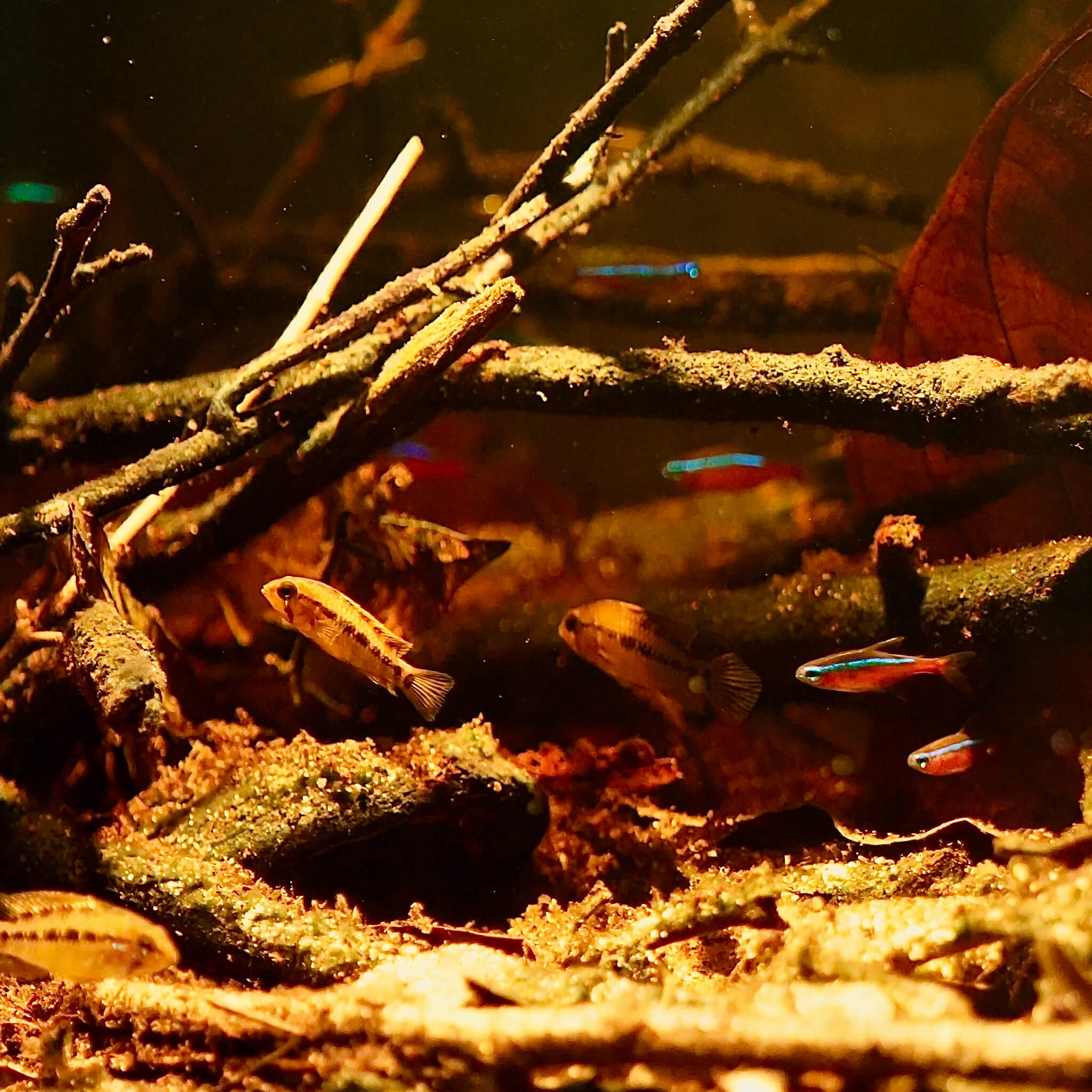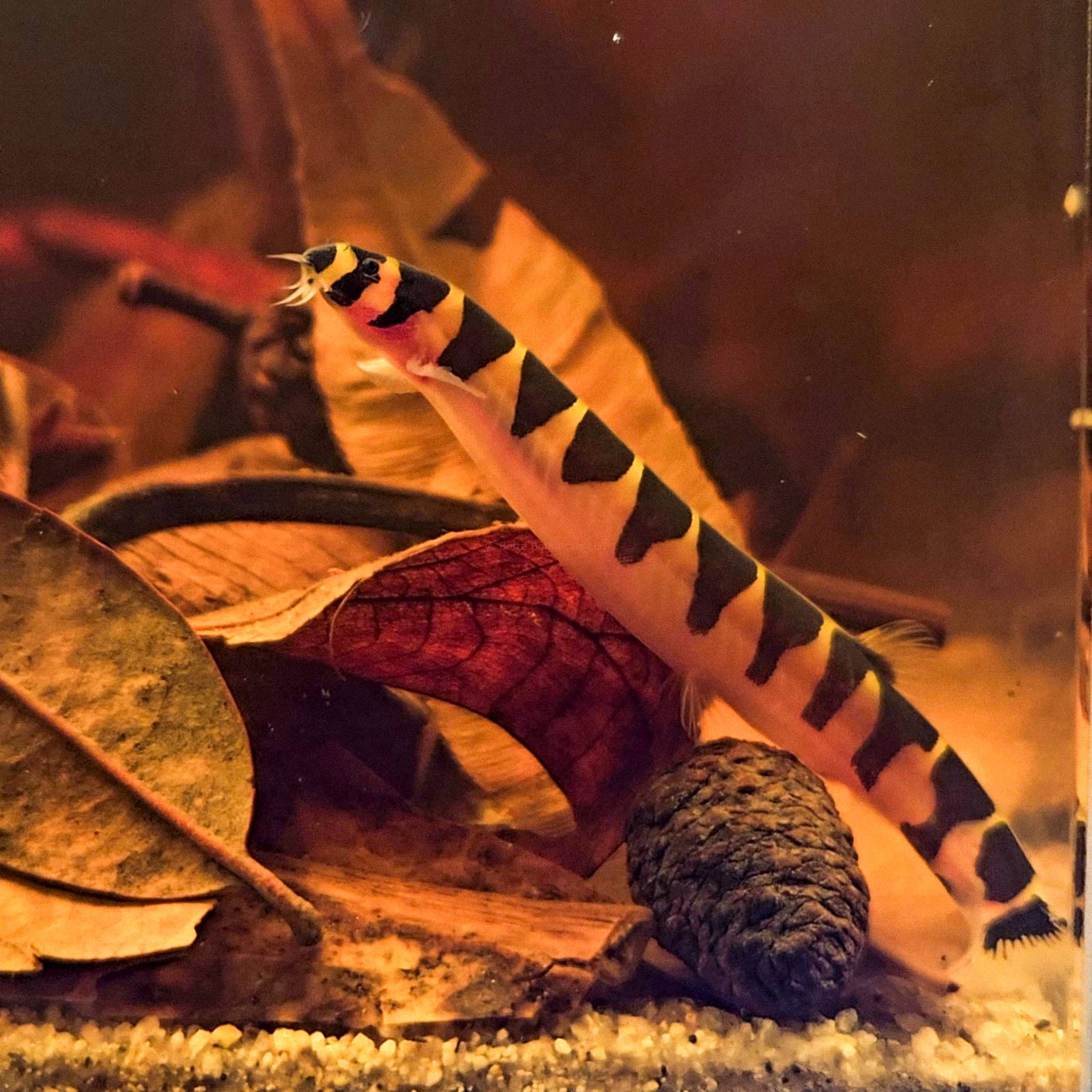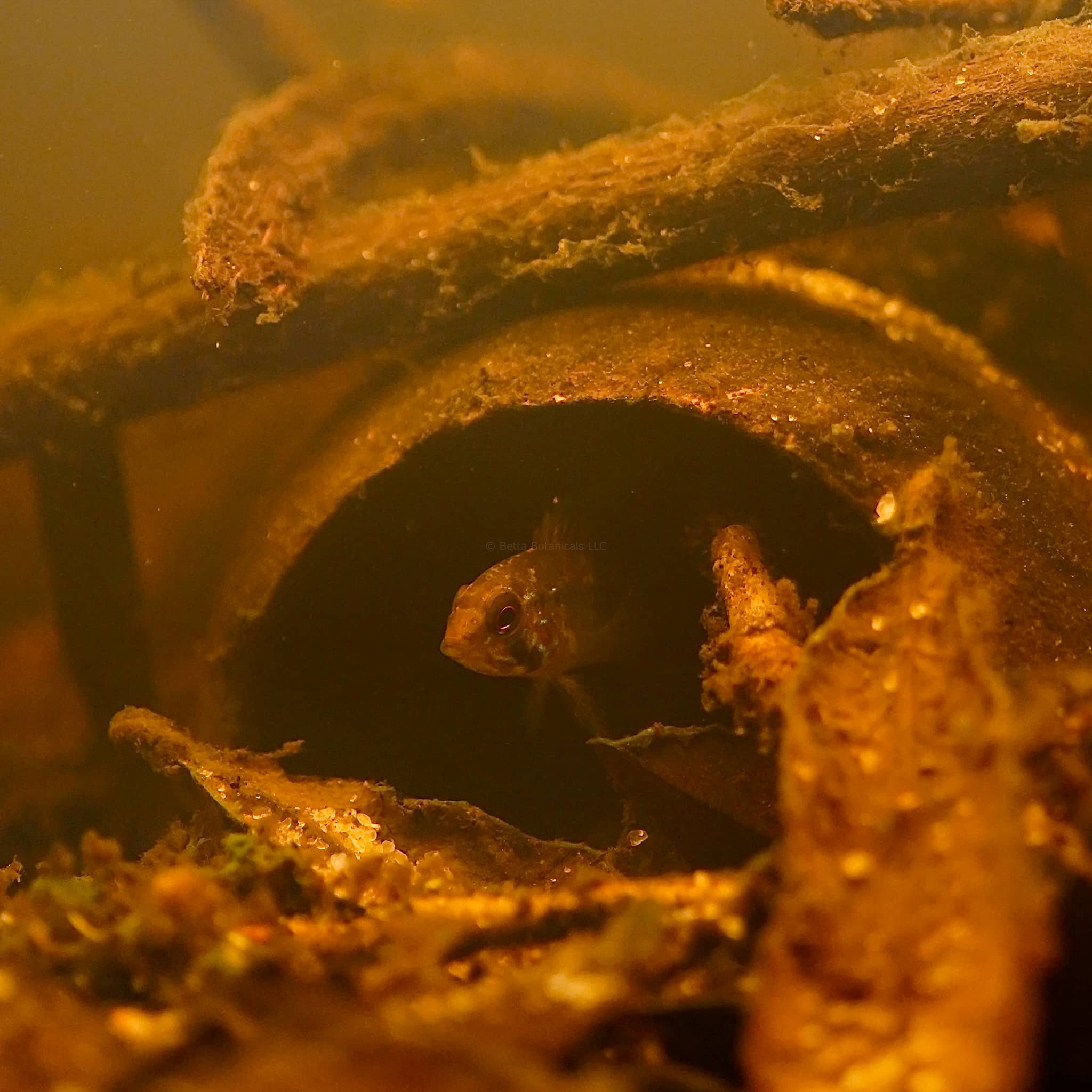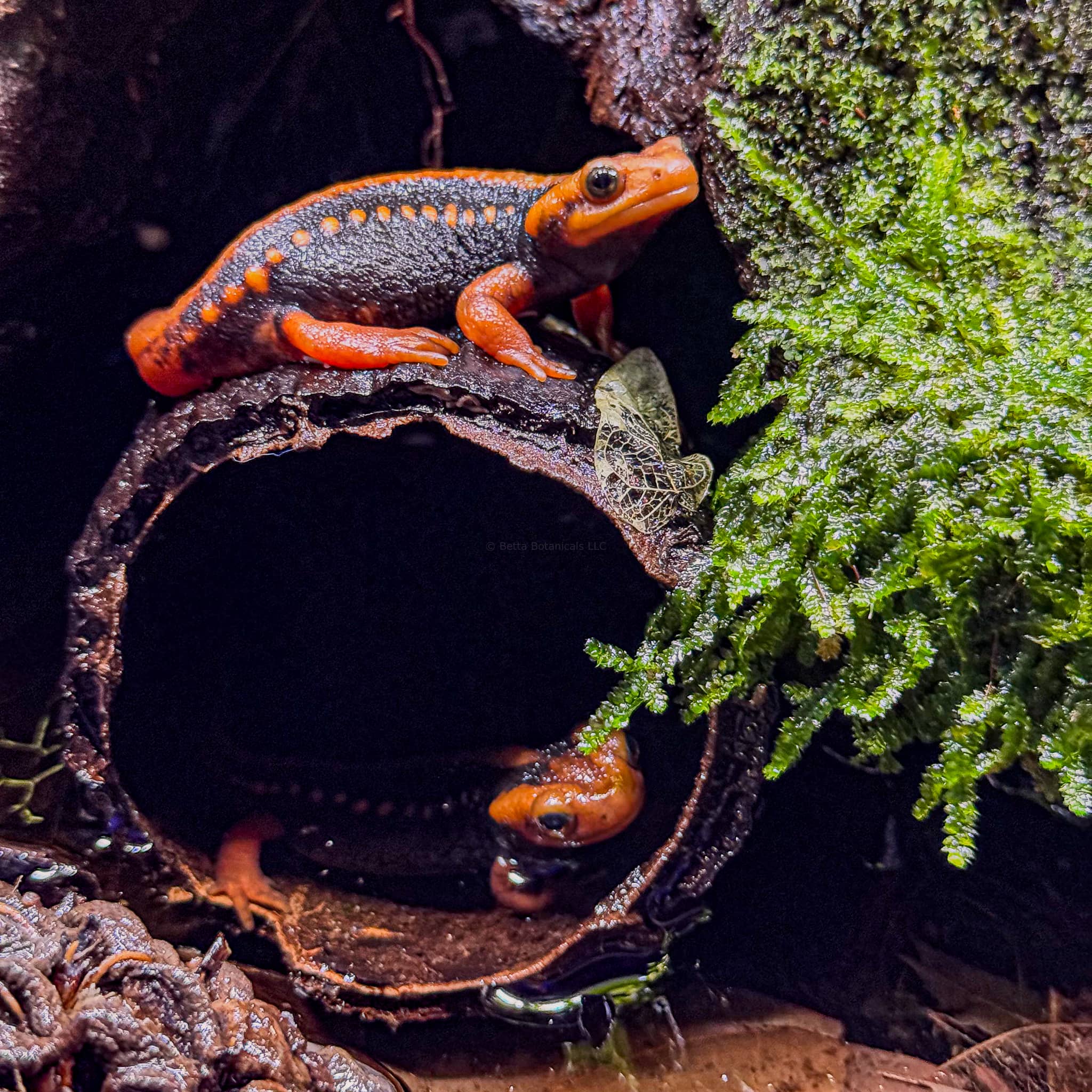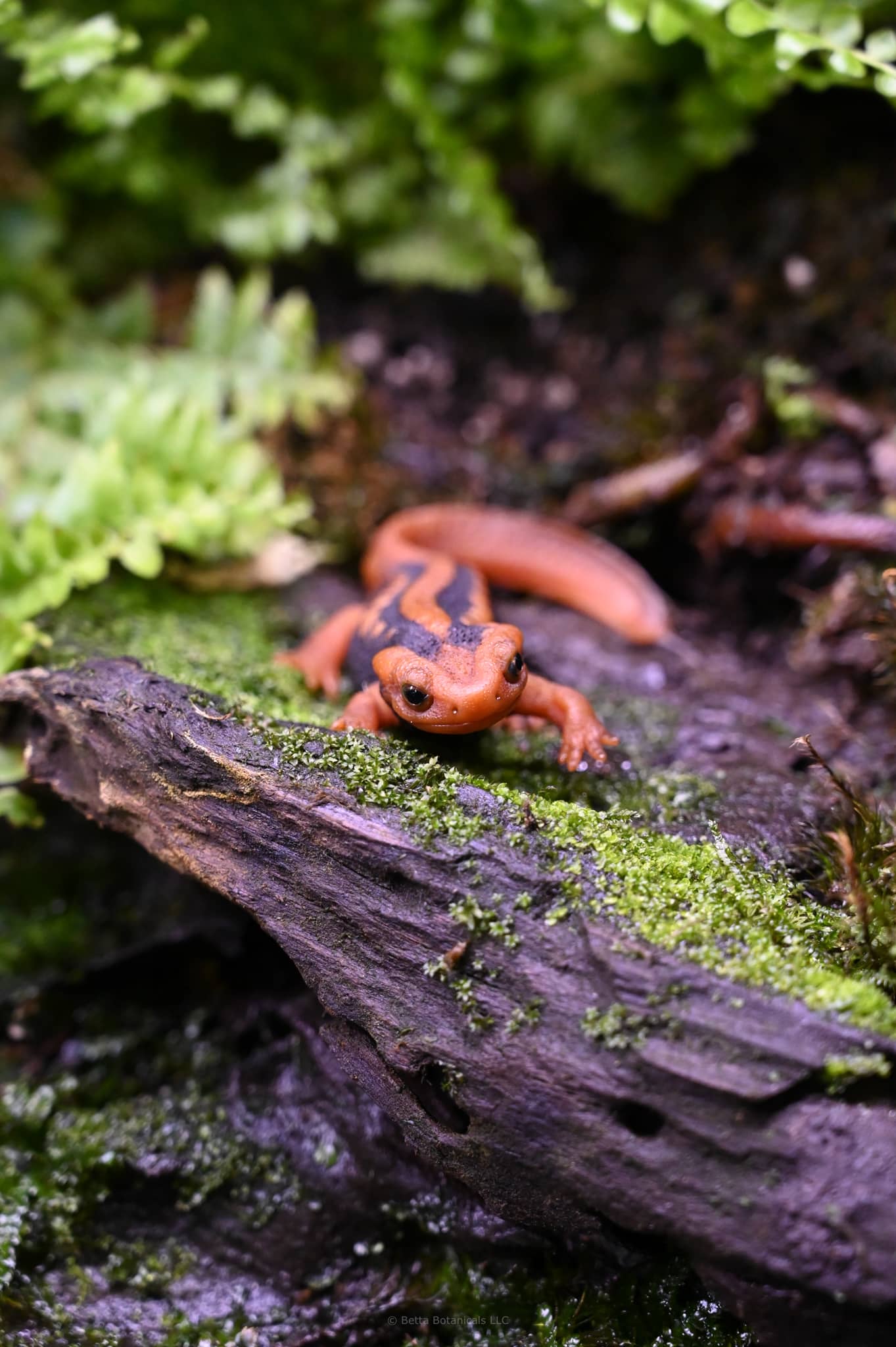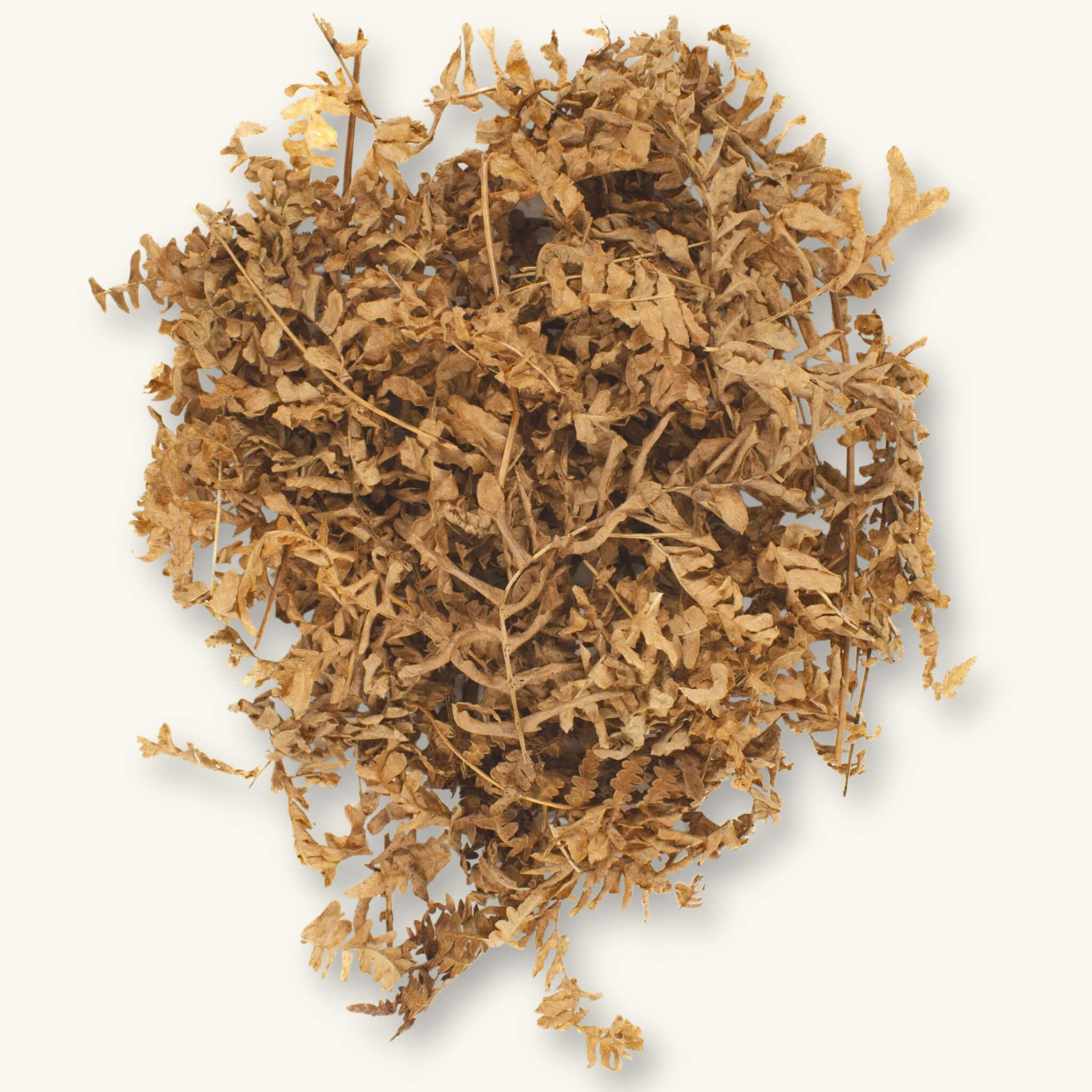
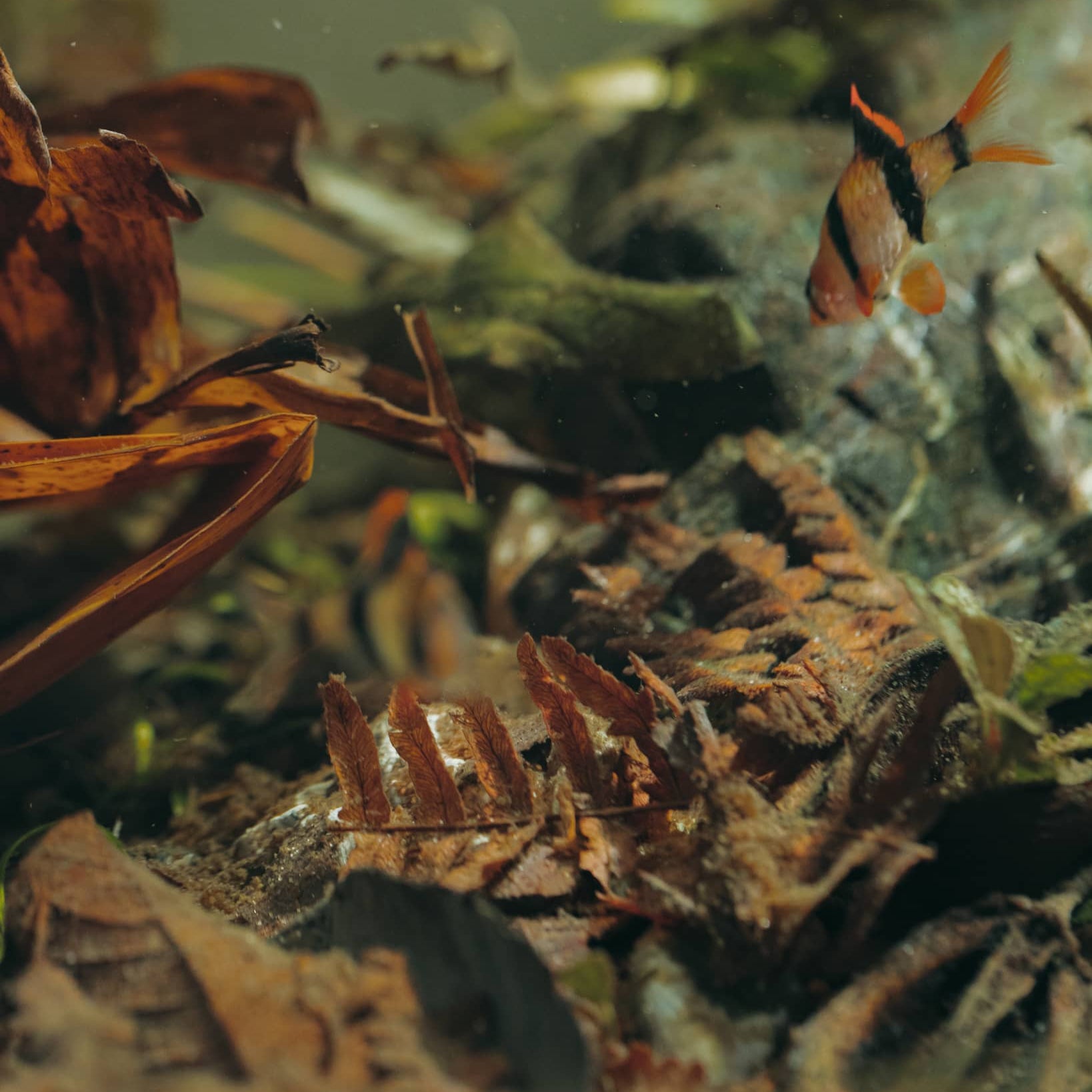
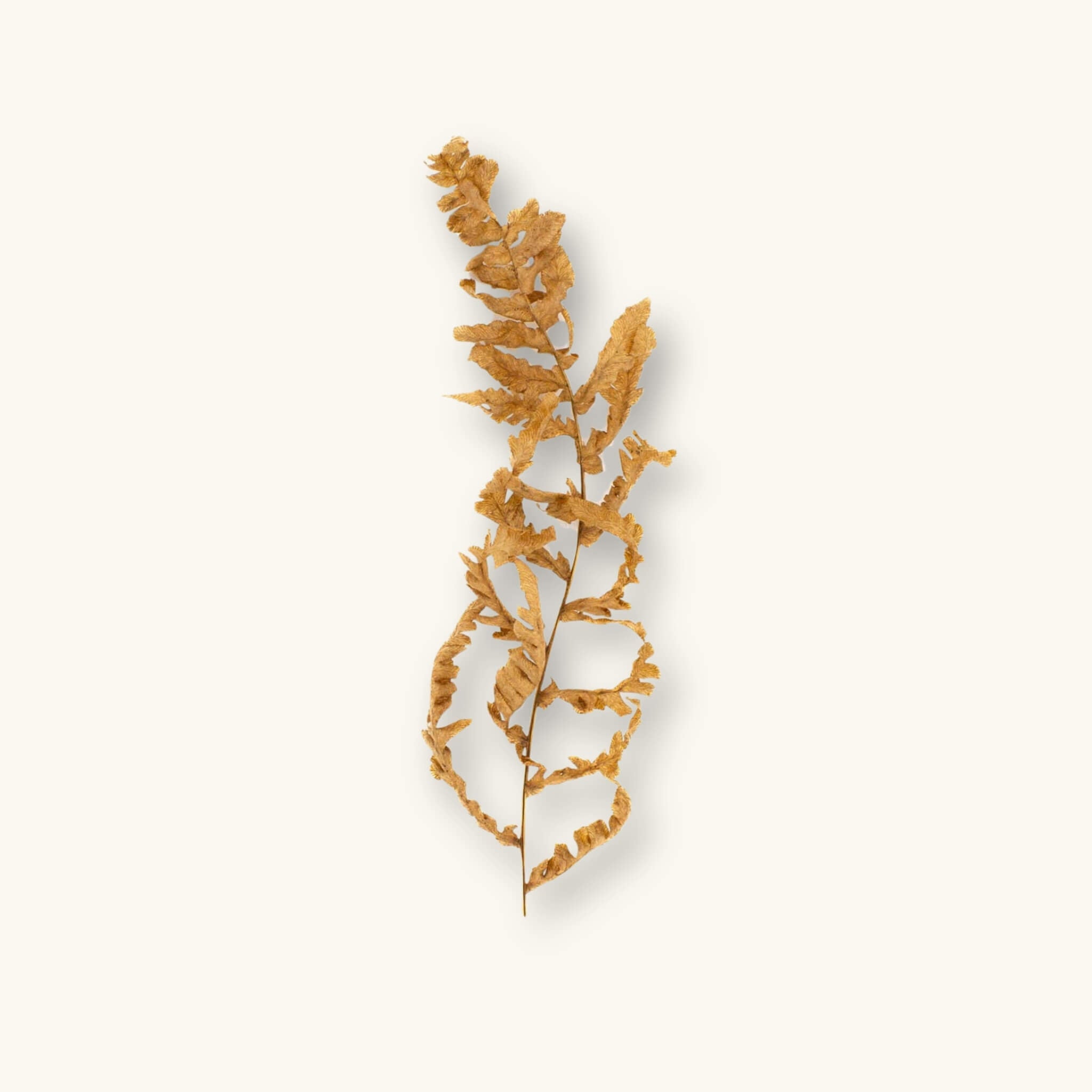
Fern Fronds | Pteridium sp.
Fern Fronds on the Surface:
Collected from North American forest edges and stream corridors in fall, these dried Pteridium fronds have fine, lace-like textures that help create the look and function of the leaf litter bed in botanical method aquariums and bioactive enclosures. They grow supplemental nutrition—biofilms and fungi—for the ecosystem’s inhabitants and produce almost no tannin content in the water. Our Bracken Fern Fronds help recreate the dynamic habitat and structure composition found in tropical stream beds of popular aquarium fishes from around the globe.
Essential Details
- Tannin Level: Low
- Tint Color: Very light straw to pale amber (minimal tint)
- Durability: Moderate—fronds soften steadily; fragments integrate into the detritus layer over weeks
- Habitat Location: North America (temperate forest understory and riparian margins)
- Optimal For: Bettas, rasboras, tetras, shrimp, small catfishes; bioactive terrariums with isopods/springtails
- Use with Caution: Optimal for use with all critters
- Size Range: Mixed sizes; finely divided fronds and larger leaf sections
- Quantities: A full 8oz Volume Bag. Natural variation in size, curl, and texture is expected.
Fern Fronds for Aquariums & Vivariums
In botanical method aquariums, these fronds create “micro-habitats”—thin, branched surfaces that rapidly host fungi, bacterial films, and grazing microfauna. Because tannin output is low, they’re ideal when you want ecological function and detrital formation without strong tea-colored water. As they condition, fronds soften and shed small bits that mix into a “perpetual substrate,” supporting nutrient cycling and supplemental feeding for shrimp, snails, and fry.
In vivariums, the fronds provide a diverse size and texture to the larger leaves commonly used on the forest floor. Cleanup crews (isopods, springtails) process the material efficiently, while the airy structure helps maintain humidity gradients and shelter in the leaf-litter zone.
Beneath the Leaves: Pteridium in the Wild
Along trail edges and streambanks, bracken ferns grow in broad fans, then lay down at season’s end, weaving a light, tan mat over the soil. Rains carry fragments into ditches and streams where they snag on roots and stones, become colonized by fungi, and slowly feed the detrital web. Adding these fronds echoes that natural habitat process—letting Mother Nature lead the way.
Sustainability Note:
This product’s packaging is home compostable. Just like the botanicals inside, it will break down naturally and return to the soil—because what supports your ecosystem should minimally impact our planet.
Not for human consumption. Preparation required.
This is a natural product—variation in color, shape, and texture is expected.

Fern Fronds | Pteridium sp.
Home is getting more natural
While the aesthetic appeal of botanicals and tinted water can be quite attractive to us, the recreation of nature to emulate water conditions, feeding patterns, spawning displays, and territory building are the true benefits botanicals provide to our critters.
Botanical FAQs
Compostable Packaging Promise
Our packaging is designed to return safely to the Earth, just like the botanicals inside. Every bag is BPA- and Phthalate-free, GMO-free, and contains no animal products. Each meets ASTM D6400 composting standards, ensuring it can fully break down in a home compost bin.
What are the Fluffy White Growths on my Botanicals?
That’s biofilm and fungi—what we call the “goo phase.” It’s one of the clearest signs that your aquarium is alive and functioning. These growths wax and wane naturally as botanicals decompose. They’re harmless, even beneficial, and will disappear on their own once microbial populations stabilize.
Will botanicals lower the pH of my water?
That depends entirely on your source water. In very soft or RODI water, botanicals can gradually lower pH as tannins and humic substances accumulate. In medium to hard tap water, buffering capacity often resists these shifts, and you may not notice much change. At Betta Botanicals HQ, our very hard water (350+ ppm) shows almost no pH change unless we use botanicals like Alder Cones or Macaranga Leaves.
When should I replace leaves or pods in my tank?
We recommend allowing botanicals to fully break down into detritus, since this fuels microbial life and enriches the substrate. You can remove them once they stop tinting the water, but you’ll lose some of their ecological benefits. Each time you add new botanicals, follow proper preparation and observe your livestock until you learn your aquarium’s rhythm.
Are your products just for bettas?
Nope. Our botanicals are safe for almost all aquariums, terrariums, vivariums, and paludariums. The only exceptions are goldfish and axolotls, which may ingest small pods like alder cones or casuarina cones. For those species, we recommend large leaves such as Indian Almond, Loquat, or Jackfruit.
What are Tannins?
Tannins are natural compounds released by leaves, seed pods, and bark as they decompose in water. They soften water, gently lower pH, and create the characteristic tea-stained tint found in blackwater habitats. But their role goes far beyond color—tannins fuel beneficial bacteria, fungi, and biofilms, which form the foundation of a healthy ecosystem. They also offer mild antifungal benefits and help reduce stress in fish by replicating the natural conditions they’ve evolved in. At their core, tannins are plant-derived antioxidants that connect your aquarium to the same processes at work in wild flooded forests and streams.
